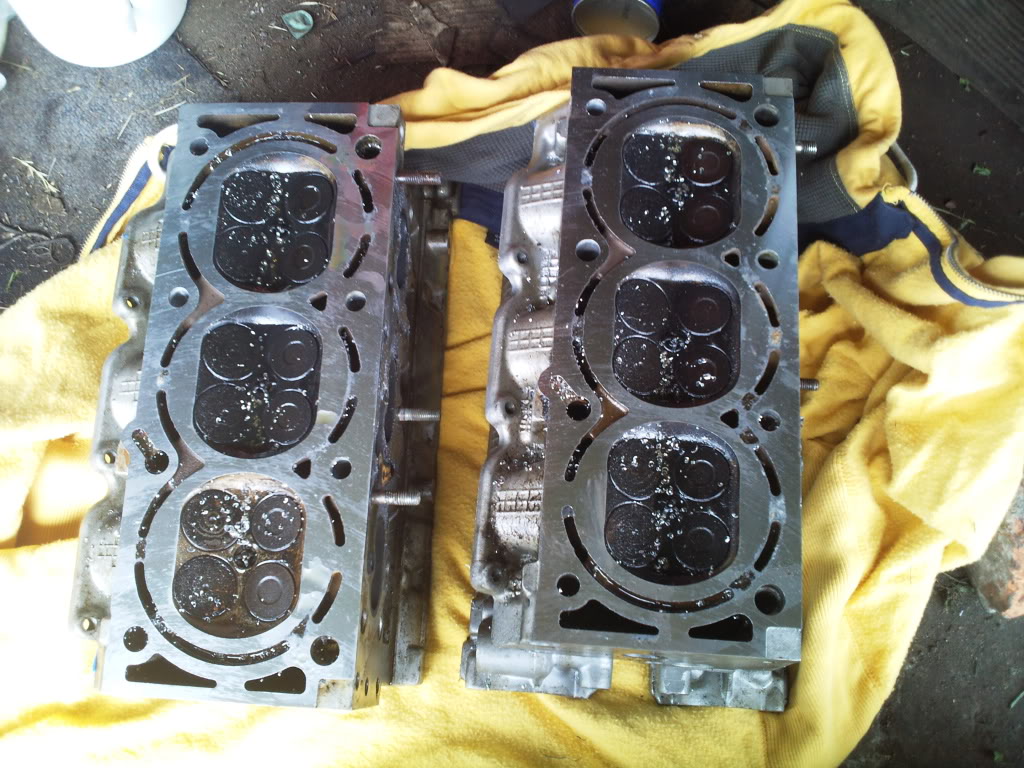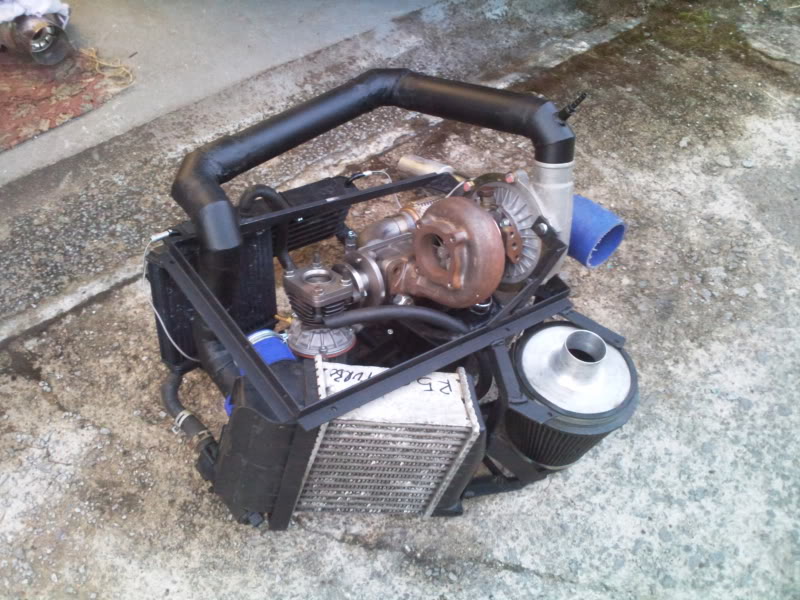V6 Ka - Remote turbo project
#121
#122
There's a bit of a trade-off to be made with pipe sizes:
- Bigger diameter = slower velocity and large volume so will see you more lag, but lower pressure drop
- Smaller diameter = higher velocity and lower volume gives less lag, but higher pressure drop
The other side to it is of course that ultimately you will not be able to push anymore air down a narrow pipe due to pressure-drop/resistance increasing with velocity/volume, so you'd have a response like a wrc car with decreasing torque and slowed/flat power curve beyond whatever the critical rpm/boost point worked out to be.........and resulting in compressor stall quite possibly.
Chris
- Bigger diameter = slower velocity and large volume so will see you more lag, but lower pressure drop
- Smaller diameter = higher velocity and lower volume gives less lag, but higher pressure drop
The other side to it is of course that ultimately you will not be able to push anymore air down a narrow pipe due to pressure-drop/resistance increasing with velocity/volume, so you'd have a response like a wrc car with decreasing torque and slowed/flat power curve beyond whatever the critical rpm/boost point worked out to be.........and resulting in compressor stall quite possibly.
Chris
Last edited by cjwood555; 16-05-2009 at 02:25 PM. Reason: Technical correction
#123
There's a bit of a trade-off to be made with pipe sizes:
- Bigger diameter = slower velocity and large volume so will see you more lag, but lower pressure drop
- Smaller diameter = higher velocity and lower volume gives less lag, but higher pressure drop
The other side to it is of course that ultimately you will not be able to push anymore air down a narrow pipe due to pressure-drop/resistance increasing with velocity/volume, so you'd have a response like a wrc car with decreasing torque and slowed/flat power curve beyond whatever the critical rpm/boost point worked out to be.........and resulting in compressor stall quite possibly.
Chris
- Bigger diameter = slower velocity and large volume so will see you more lag, but lower pressure drop
- Smaller diameter = higher velocity and lower volume gives less lag, but higher pressure drop
The other side to it is of course that ultimately you will not be able to push anymore air down a narrow pipe due to pressure-drop/resistance increasing with velocity/volume, so you'd have a response like a wrc car with decreasing torque and slowed/flat power curve beyond whatever the critical rpm/boost point worked out to be.........and resulting in compressor stall quite possibly.
Chris
#124
I tried my best to get it to FITP, it was nearly back together but needed a few more hours so we took my mate's Ka
This weekend was spent sorting out an issue with some captive nuts in the chassis, we had to cut them out and weld a new plate back in, this is how it looks now also sporting the new oil cooler, it'll all be back together for the weekend so I can crack on with the turbo again
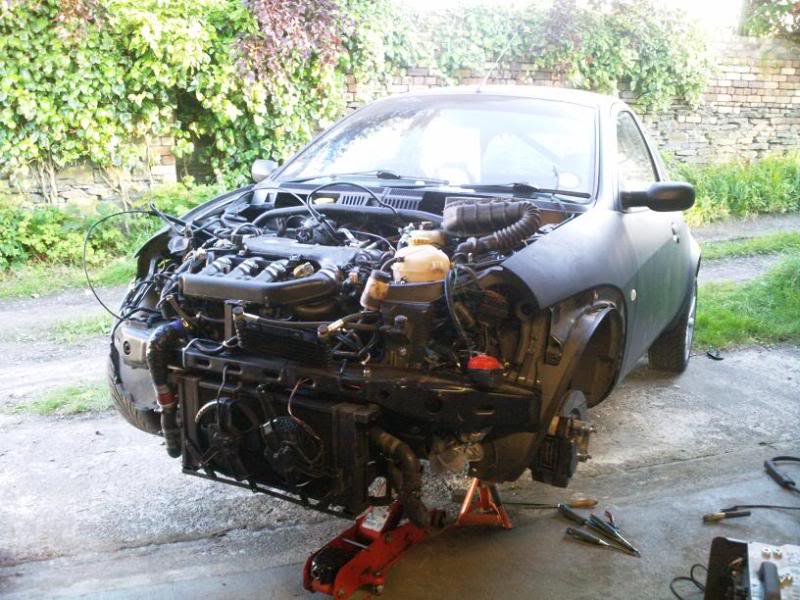
This weekend was spent sorting out an issue with some captive nuts in the chassis, we had to cut them out and weld a new plate back in, this is how it looks now also sporting the new oil cooler, it'll all be back together for the weekend so I can crack on with the turbo again

#126
#131
#133
#134
I have a 2" and a 1" run from the turbo to the engine, the plan was to only use the 2" for now and open up the 1" if I needed when the boost gets turned up, would it make sense to use both pipes from the start so I can deliver low pressure high volume (relatively speaking) from the 2" and high pressure low volume from the 1" at the same time? Both pipes go into a collector with a 3ft run of 2.5" pipe to the engine so it'll have time to normalise
It wouldn't work like that - pressure-drop / backpressure would be probably reduced by using the two pipes as you are offering additional cross sectional area compared to using the one, although pressure drop for a 2" and 1" pipe would be more than for a single pipe of equivalent area. The pressure drop / backpressure would also depend on the design of your collector.
I would suggest the best thing to do is work out the air consumption of your engine for the power you are looking to produce and the pressure you need to see at the manifold.
You can then calculate for the pipe sizes you have, what pressure drop would be seen across the length of pipe @ the flow rate calculated previously.
Adding the pressure drop of the pipe to the pressure at the manifold would tell you what the pressure at the turbo needs to be, and you also have your consumption/flow rate. Using this info you can look at your compressor map and see whether the turbo will work without surging or stalling/struggling.
Obviously you could look at the figures with pressure drops calculated for different sizes of pipe and pick the best to suit your turbo...
These calculations won't tell you much about lag, but in general, you'd have least lag with a compressor wheel/housing combo that can provide your air flow/pressure requirements through the smallest pipe (due to their being less un-compressed volume in the pipe)....BUT that might not necessarily be a turbo that gives you the power band you're after so there might be some compromise required!
Plenty of sources on the web (and probably online calculators) for the equations you need to work this stuff out
P.S. looking good - can't wait to see it finished!
Chris
#136
Hi mate,
It wouldn't work like that - pressure-drop / backpressure would be probably reduced by using the two pipes as you are offering additional cross sectional area compared to using the one, although pressure drop for a 2" and 1" pipe would be more than for a single pipe of equivalent area. The pressure drop / backpressure would also depend on the design of your collector.
I would suggest the best thing to do is work out the air consumption of your engine for the power you are looking to produce and the pressure you need to see at the manifold.
You can then calculate for the pipe sizes you have, what pressure drop would be seen across the length of pipe @ the flow rate calculated previously.
Adding the pressure drop of the pipe to the pressure at the manifold would tell you what the pressure at the turbo needs to be, and you also have your consumption/flow rate. Using this info you can look at your compressor map and see whether the turbo will work without surging or stalling/struggling.
Obviously you could look at the figures with pressure drops calculated for different sizes of pipe and pick the best to suit your turbo...
These calculations won't tell you much about lag, but in general, you'd have least lag with a compressor wheel/housing combo that can provide your air flow/pressure requirements through the smallest pipe (due to their being less un-compressed volume in the pipe)....BUT that might not necessarily be a turbo that gives you the power band you're after so there might be some compromise required!
Plenty of sources on the web (and probably online calculators) for the equations you need to work this stuff out
P.S. looking good - can't wait to see it finished!
Chris
It wouldn't work like that - pressure-drop / backpressure would be probably reduced by using the two pipes as you are offering additional cross sectional area compared to using the one, although pressure drop for a 2" and 1" pipe would be more than for a single pipe of equivalent area. The pressure drop / backpressure would also depend on the design of your collector.
I would suggest the best thing to do is work out the air consumption of your engine for the power you are looking to produce and the pressure you need to see at the manifold.
You can then calculate for the pipe sizes you have, what pressure drop would be seen across the length of pipe @ the flow rate calculated previously.
Adding the pressure drop of the pipe to the pressure at the manifold would tell you what the pressure at the turbo needs to be, and you also have your consumption/flow rate. Using this info you can look at your compressor map and see whether the turbo will work without surging or stalling/struggling.
Obviously you could look at the figures with pressure drops calculated for different sizes of pipe and pick the best to suit your turbo...
These calculations won't tell you much about lag, but in general, you'd have least lag with a compressor wheel/housing combo that can provide your air flow/pressure requirements through the smallest pipe (due to their being less un-compressed volume in the pipe)....BUT that might not necessarily be a turbo that gives you the power band you're after so there might be some compromise required!
Plenty of sources on the web (and probably online calculators) for the equations you need to work this stuff out
P.S. looking good - can't wait to see it finished!
Chris
I've found an online calculator for air pressure drop but of course it needs the CFM so I'll try to find the specs/compressor map on garret's website then work from there
#137
I've not done much recently on the turbo side so I decided to pull my finger out
Boost pipes, collectors and some exhaust stuff
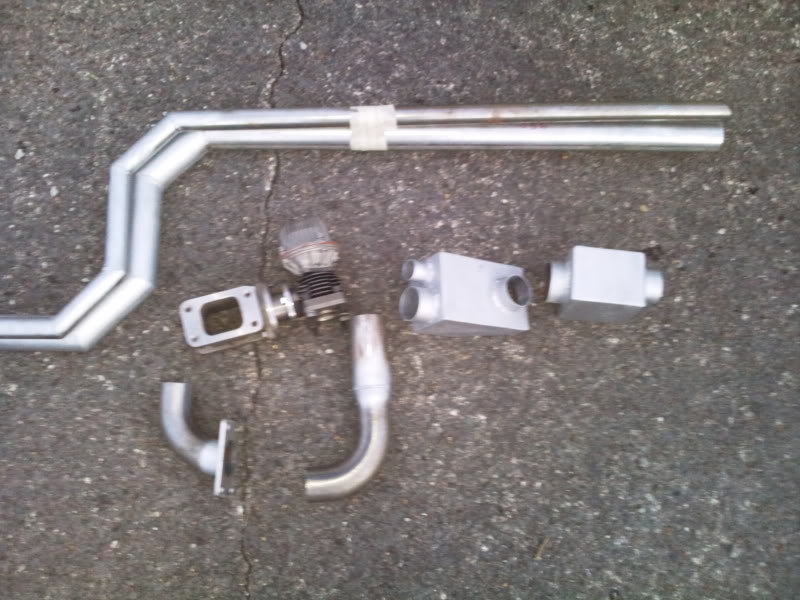

Poked a hole through
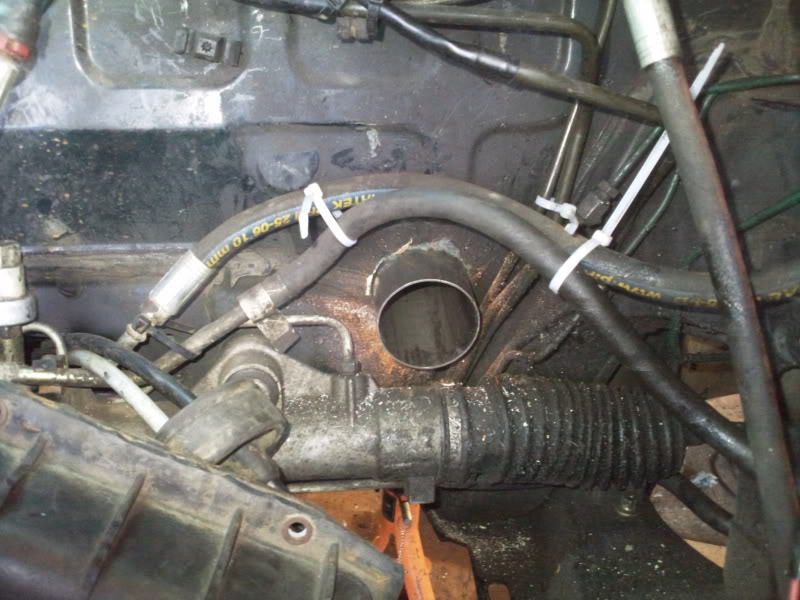
Mocking up the pipework
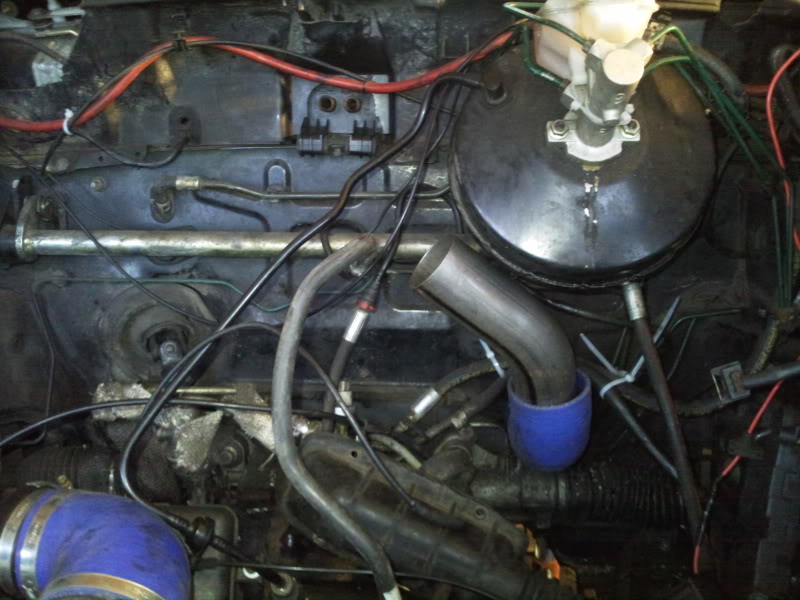
I'm doing a little rewiring in the bay while the engine is out, fingers crossed I'll get the 3 litre back in this coming week and get some miles on it without the turbo so I know the engine is sound then finish plumbing the bad boy in!
Boost pipes, collectors and some exhaust stuff


Poked a hole through

Mocking up the pipework

I'm doing a little rewiring in the bay while the engine is out, fingers crossed I'll get the 3 litre back in this coming week and get some miles on it without the turbo so I know the engine is sound then finish plumbing the bad boy in!
#139
Hey great project you got there just a little question though with the air filter being that close to the turbo is there not going to be heatsoak problem with the filter sucking hot air?
Anyway keep up the good work.
Anyway keep up the good work.

#141
given that it'll be exposed to air passing by the car i'd have though not?
#143
I thought I'd be at FITP but couldn't finish it, I don't want to jinx saying it'll be at Ford Fair lol
The head gasket is completely fucked on this 3 litre so it's coming apart early next week and these bad boys going in, CR will be 8.4 to 1 if everything is as it should be:
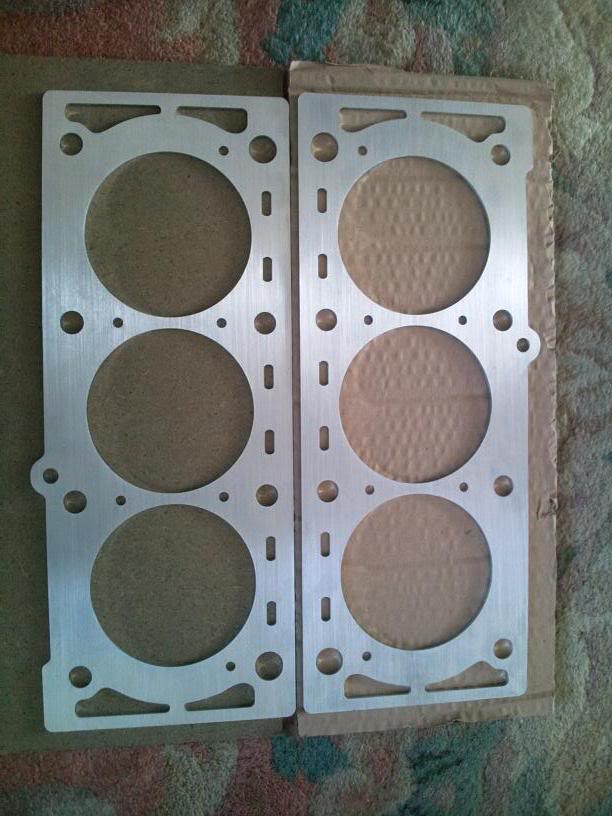
Progress has been really slow but as soon as the HG is done I'll be taking a week off and probably cane a credit card lol
Fair play to Ferriday engineering, I phone them Monday and they turned up today even though he's broken his arm!
The head gasket is completely fucked on this 3 litre so it's coming apart early next week and these bad boys going in, CR will be 8.4 to 1 if everything is as it should be:

Progress has been really slow but as soon as the HG is done I'll be taking a week off and probably cane a credit card lol
Fair play to Ferriday engineering, I phone them Monday and they turned up today even though he's broken his arm!
Last edited by Shonky; 01-07-2009 at 01:00 PM.
#144
Another little update..
Boost pipes mocked up retaining the MAF as it'll be on the standard ECU until I can put some cash together to fit some aftermarket management I already have
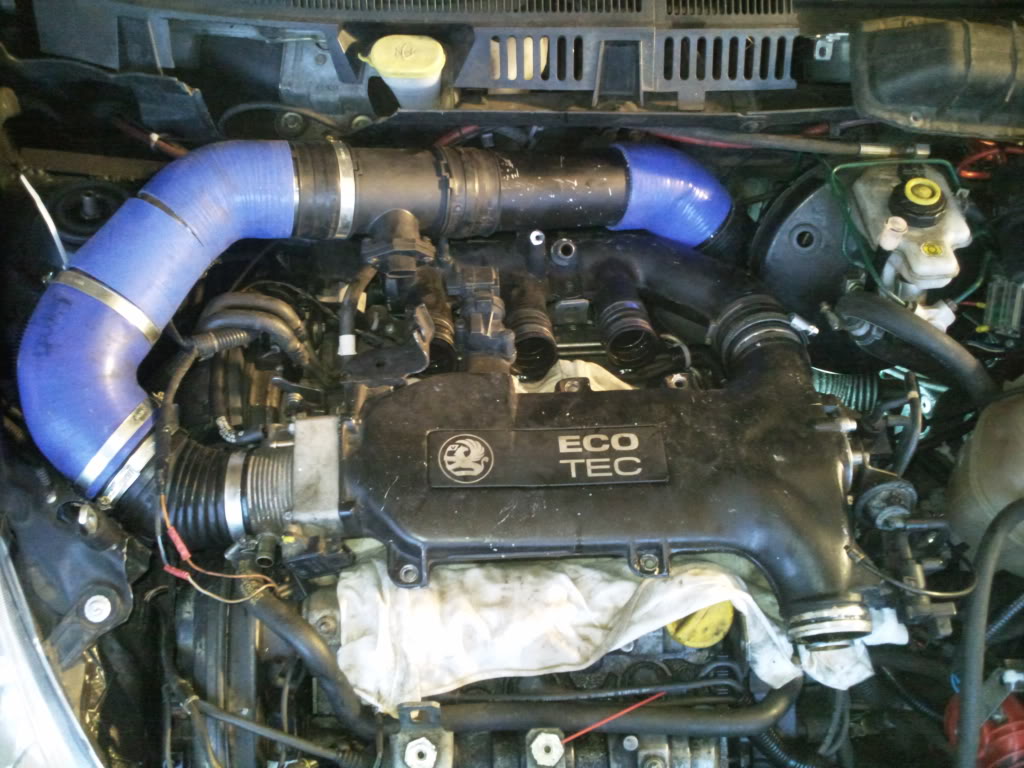
Pipe goes behind the master cylinder..
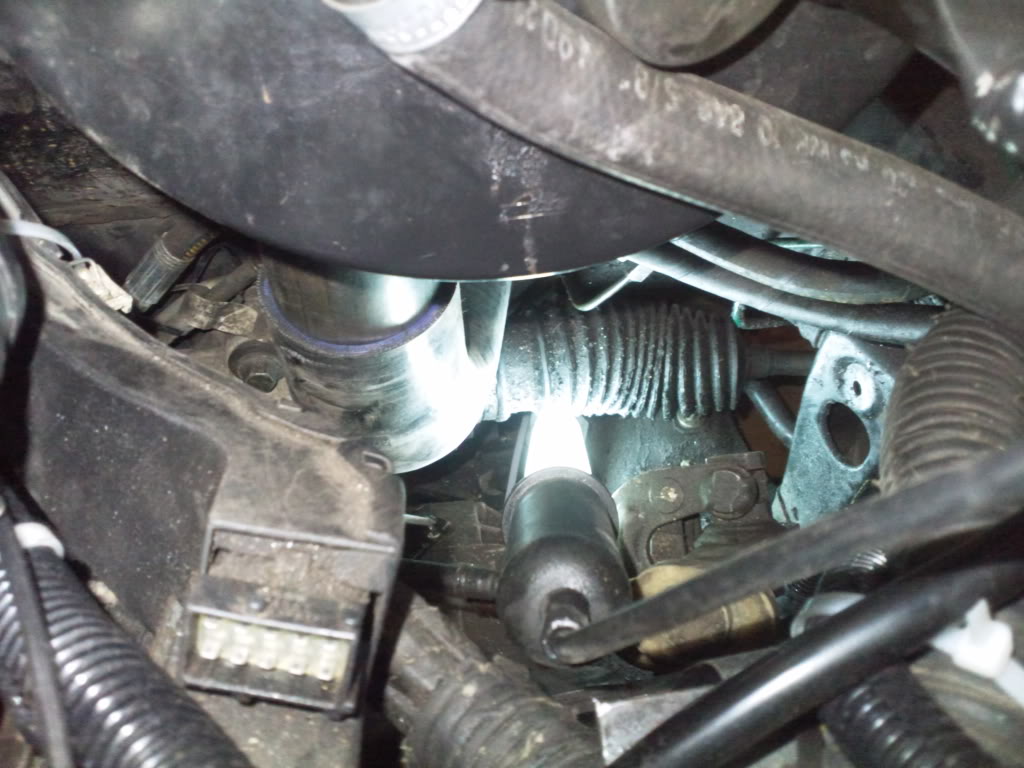
... through the bulkhead
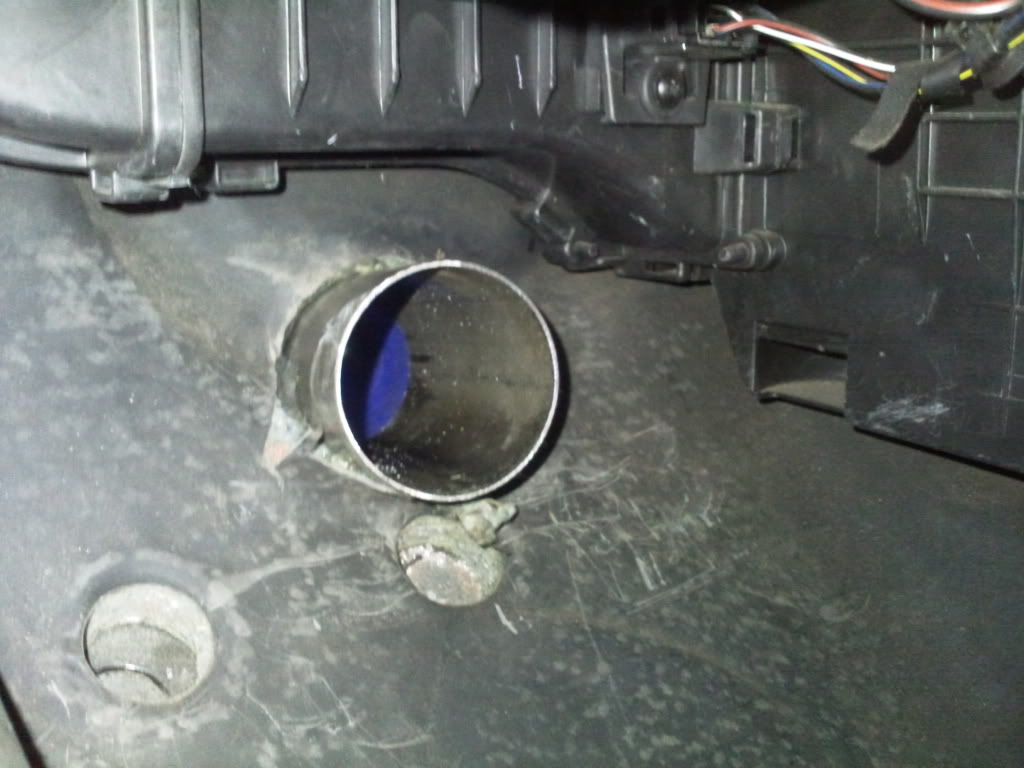
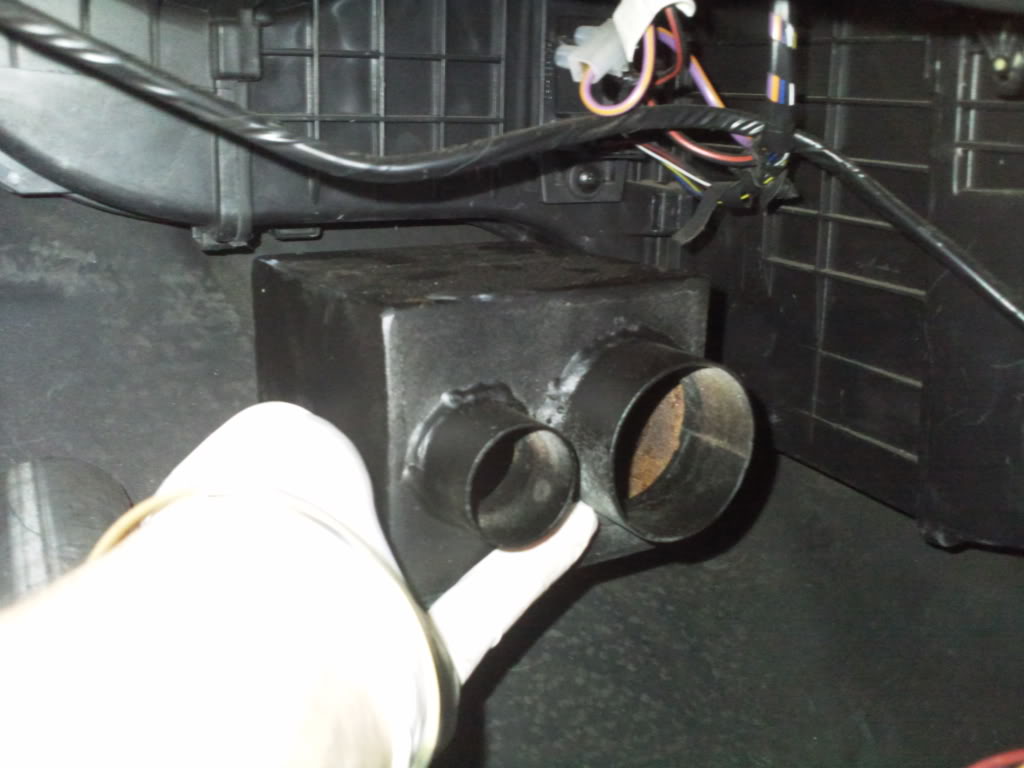
Boost pipes mocked up retaining the MAF as it'll be on the standard ECU until I can put some cash together to fit some aftermarket management I already have

Pipe goes behind the master cylinder..

... through the bulkhead


#151
Little update
Totally knackered (literaly in bits) head gasket
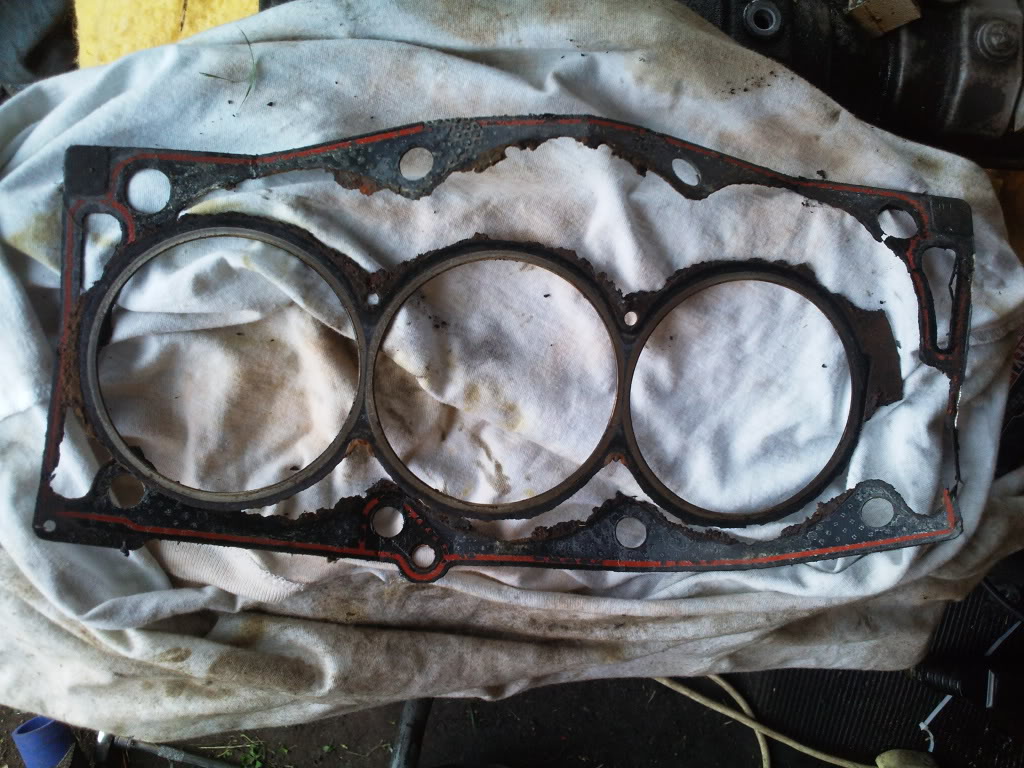
Looks like it's been knackered for a while, there was a lot of pitting
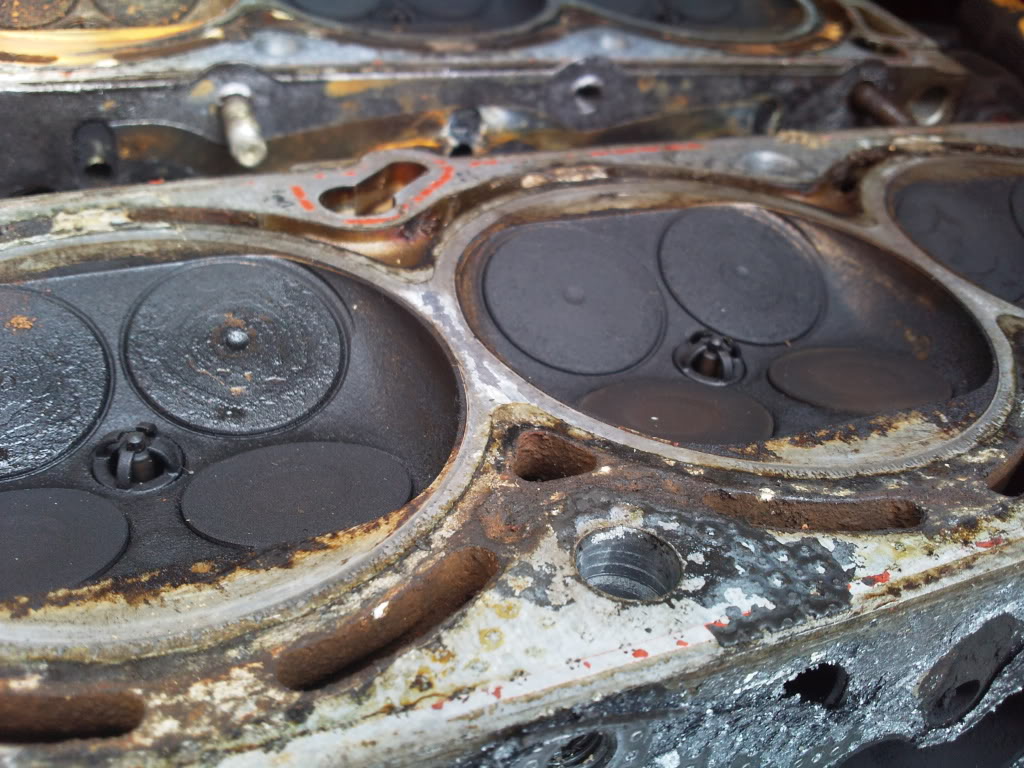
Had the head skimmed then pressure washed
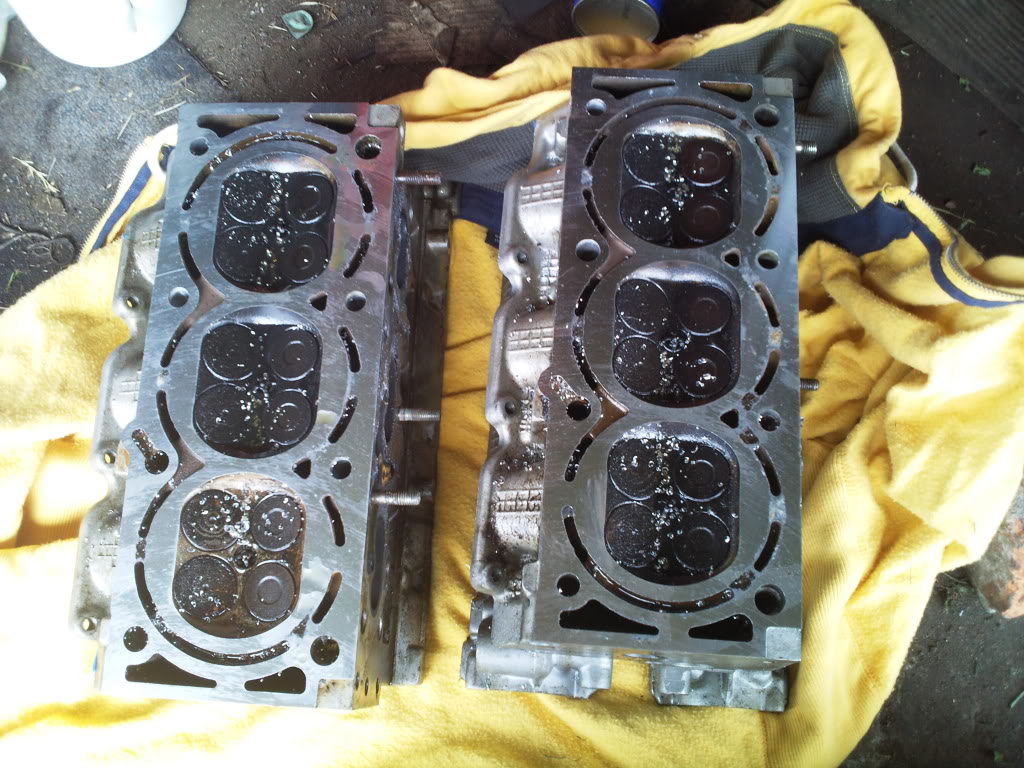
Ive not ventured into the world of timing so I got my mate to fit the spacer plates, new head gasket and do the timing
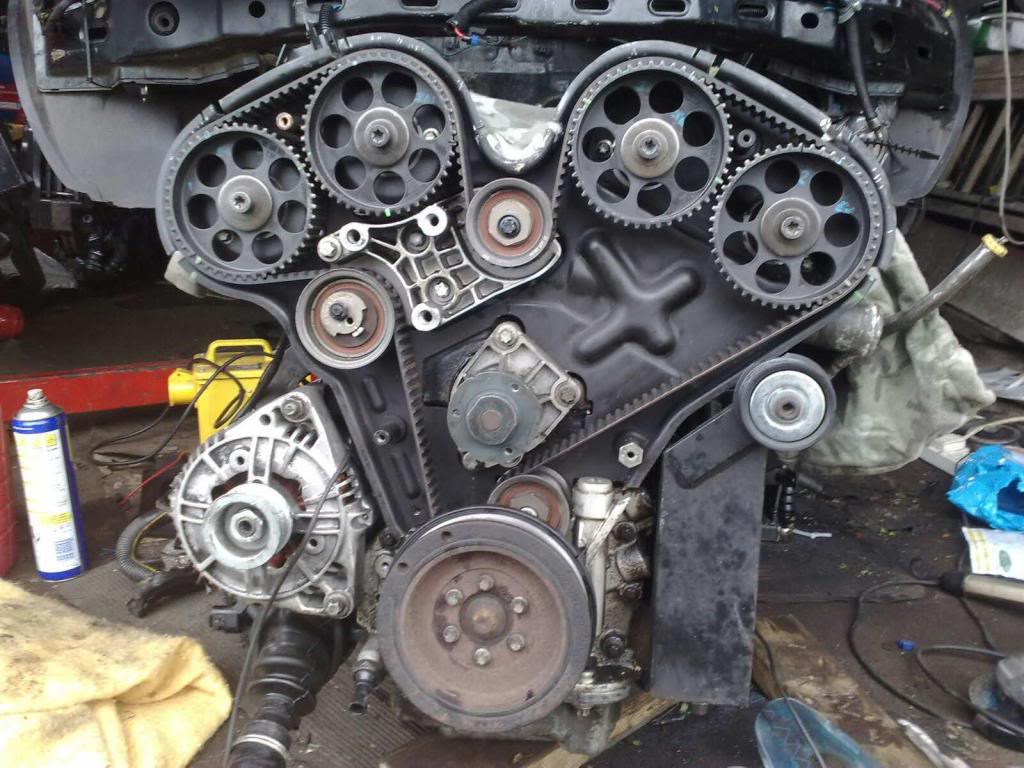
As the heads have now moved slighty we had to modify the inside cam cover to be able to bolt it up and also peel back the tops allowing clearance for the cambelt
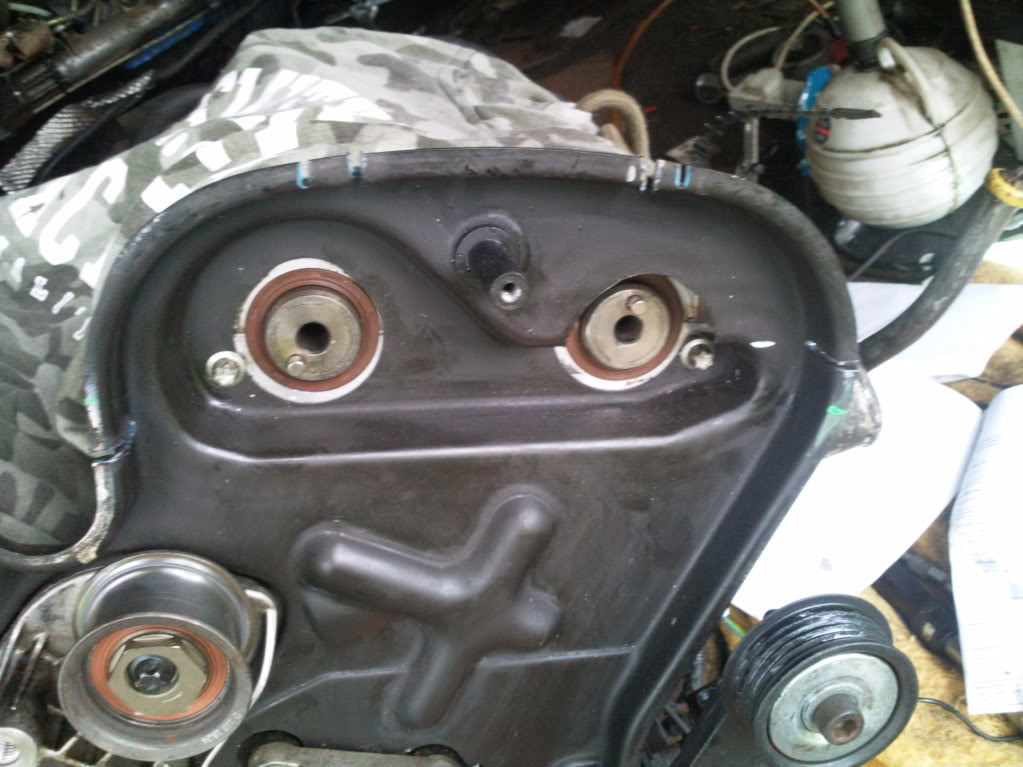
Totally knackered (literaly in bits) head gasket

Looks like it's been knackered for a while, there was a lot of pitting

Had the head skimmed then pressure washed

Ive not ventured into the world of timing so I got my mate to fit the spacer plates, new head gasket and do the timing

As the heads have now moved slighty we had to modify the inside cam cover to be able to bolt it up and also peel back the tops allowing clearance for the cambelt

#152
I've fitted an oil cooler, radiator for the coolant and the water pump, I'll hopefully get it the oil and water plumbed in Monday 
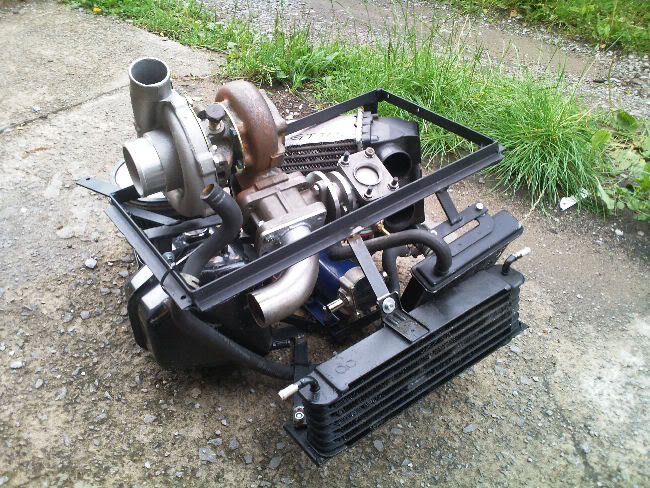
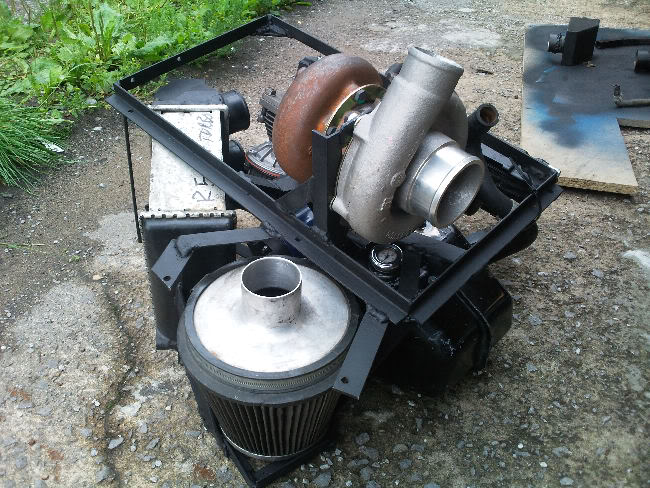
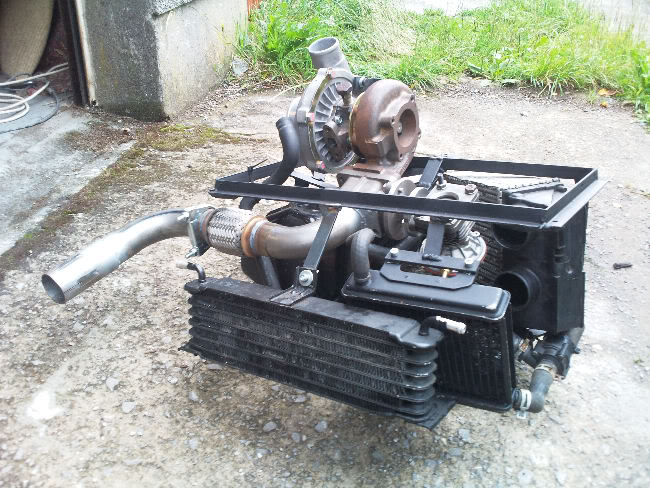
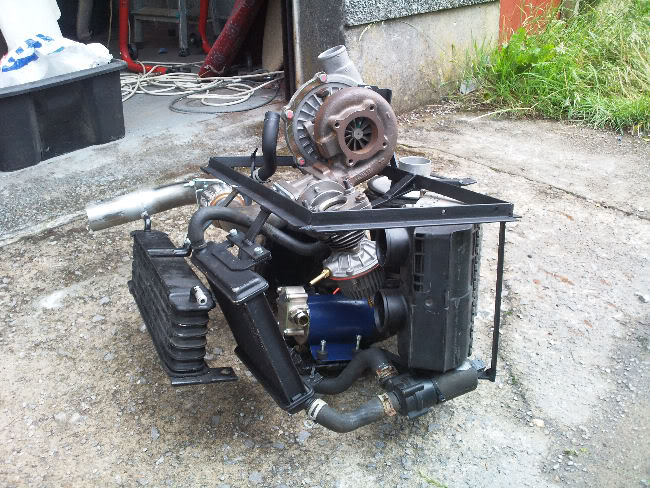


I've put a ball valve in the 1" pipe so I can play around with the air supply characteristics
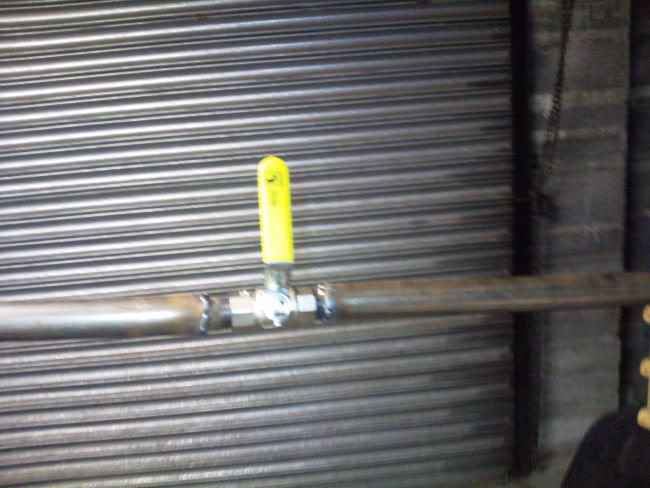






I've put a ball valve in the 1" pipe so I can play around with the air supply characteristics

#155
#158






